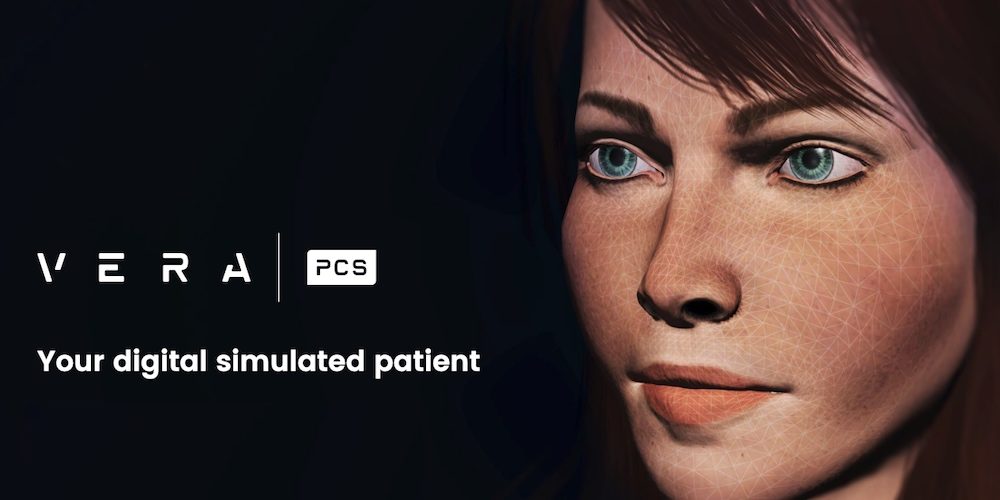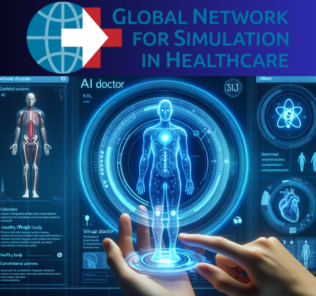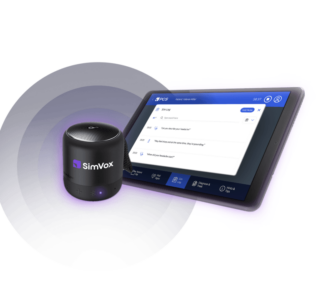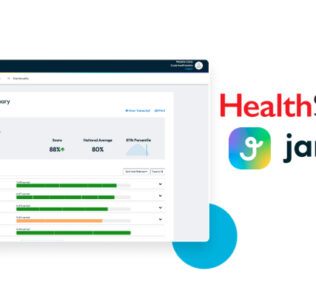VERA Shows Us the Future of Healthcare Simulation Communications Training @IMSH2019: VR Patients with AI
Over the last three days, thousands of healthcare simulation champions from around the world came together at IMSH 2019 to see the latest in medical simulation technologies. HealthySim was on hand to capture the latest and greatest with vendor video demonstrations coming soon in the weeks ahead. However, one new product VERA, demonstrated a crucial leap into the future of healthcare simulation communication training technologies — that we wanted to share about it here today! *Update* – IMSH Video Interview Demo Now Below!
Built on the same platform as the ALEX manikin, VERA enables for Artificial Intelligence (AI) driven patient communication engagement but in motion captured Virtual Reality (VR). After putting on a VR headset, we selected a patient case and entered a clinical hospital environment. Introducing ourselves by saying “Hello Vera”, as if prompting our smart phone with “Hey Google”, we asked the patient about her recent headaches. With each question posed, VERA answered in real time, understanding almost always exactly what we were asking and providing us a relevant response. We were literally talking out loud to a virtual patient — and the “Wow” factor of having a real conversation was overwhelmingly powerful!
The combination of AI, VR, and Simulation technologies here represents a giant leap forward in patient communication training technologies. Let’s unpack some of these core technologies and understand why VERA represents an important part in the future of healthcare communication training.
Sponsored Content:
Google AI: VERA, like ALEX, utilizes Google AI to rapidly listen to your speech and calculate exactly what you are trying to say. This means that VERA has the power of machine based learning behind her. This is very important because, in a sense, Google AI learns exponentially: the system adds more knowledge with each phrase uttered, as well as from each correctly or even incorrectly answered response. VERA teaches herself — and the more users, the more she learns and the better she will become. In a sense, your ROI for this communication training platform increases over time! And even though VERA is “cloud-based” in her Google AI, the speed of the conversation back through Google Speech was immediate — an important factor when practicing the skills of communication. Note that because there is a need to calculate this by Google AI for each phrase, the VERA tool requires a subscription pricing model for ongoing utilization.
Virtual Reality: VR represents a crucial component to healthcare simulation that will continue to be rapidly developed and adopted in the industry to fill a specific training gap between didactics and physical simulated interactions in real life with manikins. This unique space is boundless to time and location, and eventually even the number of participating learners from anywhere in the world. While Ambulance Simulators usually stay in a specific classroom, with VR, like Star Trek’s the holodeck, VERA could represent patients in any clinical environment from EMS scenarios, hospital med-surg or surgical scenarios, to NASA related space training missions. The 3D graphics of VERA, although not to the quality of the latest Pixar animations, were convincing and can be further improved over time. By combining this with motion capture cameras, your exact location and movements are known by the system, so the response to your physical movements will be responded too with eye tracking from VERA patients.
Running a Standardized Patient program is extremely challenging, with the need to schedule dozens of live patients who obviously have limited availability and hourly costs. Of course, nothing can replace the OSCE assessment realism possible from SPs — but VERA adds an additional opportunity to train before those more expensive high stakes simulation activities. VERA provides capture and assessment of learner actions in real time, so that instructors can follow along or review later. She includes 6 scenarios with purchase but a simple to use GUI allows for faculty to create their own as well, creating questions and possible answers which can be easily edited or added too later on.
Sponsored Content:
Developed by some of the same team who brought us Web-SP (Acquired by METI many years ago and now part of CAE Healthcare’s LearningSpace platform), VERA is being created by simulation innovators already accustomed to successfully moving the industry forward. We think VERA will too!
More About VERA
- VERA enables training medical interviewing skills to healthcare professionals while decreasing costs and operational complexity.
- VERA is a smart virtual agent who maintains eye contact and uses various facial expressions to convey emotions.
- VERA with spoken questions and VERA answers on her own, giving patient scenario specific responses to thousands of questions. The next decade healthcare jobs are expected to grow faster than any other industry.
- VERA helps healthcare education institutions to scale up their efforts to this challenge by providing a tool for their simulation programs to do more simulations more easily and at a lower cost.
Learn More About VERA Today!
Lance Baily, BA, EMT-B, is the Founder & CEO of HealthySimulation.com, which he started while serving as the Director of the Nevada System of Higher Education’s Clinical Simulation Center of Las Vegas back in 2010. Lance is also the Founder and acting Advisor to the Board of SimGHOSTS.org, the world’s only non-profit organization dedicated to supporting professionals operating healthcare simulation technologies. His co-edited Book: “Comprehensive Healthcare Simulation: Operations, Technology, and Innovative Practice” is cited as a key source for professional certification in the industry. Lance’s background also includes serving as a Simulation Technology Specialist for the LA Community College District, EMS fire fighting, Hollywood movie production, rescue diving, and global travel. He and his wife Abigail Baily, PhD live in Las Vegas, Nevada with their two amazing daughters.
Sponsored Content:




















